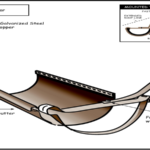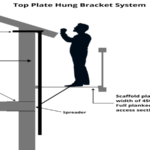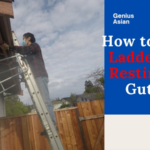Are you thinking about installing gutters on your home? Whether you’re doing it yourself or hiring a professional, there are a few things you need to know about gutter installation.
The most important thing to know is that installing gutters is not a do-it-yourself project. There are a few reasons for this. First, gutters are installed using special hangers that are attached to the fascia board, which is the board that runs along the edge of your roof. These hangers need to be installed correctly in order to ensure that the gutters are securely attached to your home. Second, the gutters themselves need to be cut to the correct size and shape in order to fit your home properly. And finally, the gutters need to be installed at the correct angle in order to ensure that they will drain properly.
If you’re not comfortable with any of these steps, then it’s best to leave the installation to a professional. However, if you are comfortable with these steps and you’re confident in your ability to do the job correctly, then installing gutters can be a relatively easy project.
The first step is to measure the length of the fascia board on your home. This is the board that runs along the edge of your roof. You’ll need to know the length in order to purchase the correct size and shape of gutters.
How do you plan and install gutters?
- Plan the installation of your gutters by measuring the length of your home’s eaves and determining the number and type of gutter support brackets needed.
- Install gutter support brackets along the length of your home’s eaves at the predetermined intervals using screws or nails.
- Cut gutters to length as needed and attach them to the support brackets using gutter hangers.
- Install end caps and downspouts at the ends of your gutters and at any corners.
- Test your gutters by pouring a small amount of water into them and checking for proper drainage.
Do gutters go under drip edge?
Gutters are installed beneath the drip edge to ensure that water is directed away from the home. The drip edge is a metal strip that is installed along the edge of the roof. The purpose of the drip edge is to prevent water from seeping underneath the shingles and causing damage to the home.
How do you calculate gutters installed?
- Decide on the type of gutters you would like to have installed. The two most common types of gutters are sectional and seamless. Seamless gutters are made from a single piece of material, while sectional gutters are made from multiple pieces of material that are connected together.
- Measure the length and width of your home. This will give you the square footage of your home, which is a necessary measurement for calculating the amount of gutters you will need.
- Calculate the square footage of your home by multiplying the length by the width. This will give you the square footage of your home.
- Determine the amount of gutters you will need by dividing the square footage of your home by the square footage of one gutter section. This will give you the number of gutters you will need.
- Install the gutters by attaching them to the fascia board of your home. Make sure to use the proper brackets and hangers to keep the gutters securely in place.
- Test the gutters by pouring a small amount of water into them and observing the flow. Make sure there are no leaks or blockages.
What is the gap between drip edge and gutter?
There are a few reasons to have a gap between your drip edge and gutter. The main reason is to allow water to drain off of your roof before it hits your gutters. This gap also allows any debris that might be on your roof to fall off before it has a chance to clog up your gutters.
Should gutters be flush with fascia?
There are a few schools of thought on this one. Some people believe that gutters should be installed so that they are flush with the fascia, or the edge of the roof. This can give the home a cleaner look, and it can also help to prevent water from seeping behind the gutters and causing damage. On the other hand, some people believe that gutters should be installed so that they sit slightly below the fascia. This can help to prevent leaves and other debris from clogging the gutters, and it can also help to reduce the chance of water damage. Ultimately, the decision of whether or not to install gutters so that they are flush with the fascia is up to the homeowner.
How do you attach gutters to fascia?
- Assess the situation and determine how many gutters you will need and what size they should be.
- Purchase the gutters and any necessary hardware from a local home improvement store.
- Clean the fascia board where the gutters will be attached. Make sure the surface is free of dirt, debris, and any old sealant.
- Apply a bead of sealant along the top edge of the fascia board.
- Center the gutter on the fascia board and press it firmly into place.
- Drive nails or screws through the pre-drilled holes in the gutter and into the fascia board to secure it in place.
- Repeat steps 5-6 for each additional gutter until all gutters are installed.
- Use sealant to fill any gaps between the gutters and the fascia board.
How many gutter hangers do I need?
The number of gutter hangers you need will depend on the size and type of your gutters. Most homes will need between 20 and 30 gutter hangers, although some may need more or less. Larger gutters or those with multiple stories may require additional hangers.
What comes first gutters or siding?
The answer to this question depends on a few different factors, but in general, gutters should be installed before siding. This is because gutters need to be installed in order to properly protect your home from water damage, and siding can be installed over the top of gutters without any issue.
Bottom Line
If you’re considering having gutters installed on your home, then you’ll want to make sure you have all the details worked out before you start. This includes everything from choosing the right materials to having a plan for installation. By taking the time to do your research and planning ahead, you can be sure that your gutters will be installed properly and will last for many years to come.
















